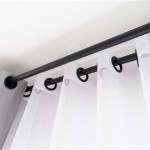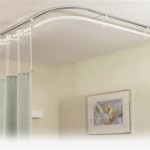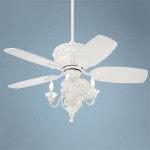Chairs That Hang From The Ceiling: A Comprehensive Guide to Ergonomics
In the realm of ergonomic seating solutions, chairs that hang from the ceiling, often referred to as suspension chairs or hanging chairs, have emerged as a unique and potentially beneficial option. These chairs, characterized by their suspended design, offer a distinctive approach to seating, blending style with functionality. This guide delves into the world of hanging chairs, providing a comprehensive overview of their ergonomic advantages, potential disadvantages, and important considerations for optimal use.
Ergonomic Benefits of Hanging Chairs
Hanging chairs offer a range of ergonomic benefits that can positively impact posture, comfort, and overall well-being. Here are some key advantages:
1. Promotion of Natural Spine Alignment
Hanging chairs, due to their suspended nature, encourage a gentle rocking motion. This motion can help promote natural spinal alignment, reducing pressure on the lower back and minimizing the risk of back pain. The rocking motion also mimics the natural sway of the body, promoting relaxation and reducing tension.
2. Enhanced Comfort and Reduced Pressure Points
The suspended design of hanging chairs distributes weight evenly, alleviating pressure points that can arise from sitting in traditional chairs. The gentle rocking movement can also help improve blood circulation, reducing discomfort and promoting relaxation.
3. Improved Posture and Reduced Strain
Hanging chairs encourage a more upright sitting posture, reducing the strain on the neck, shoulders, and back. The inherent instability of a hanging chair can also engage core muscles, promoting better posture and muscle activation.
Potential Disadvantages of Hanging Chairs
While hanging chairs offer numerous benefits, there are also potential downsides that need to be considered:
1. Limited Stability and Motion Sickness
The inherent movement of a hanging chair can be unsettling for some individuals. The rocking motion can induce motion sickness in susceptible people. Additionally, the inherent instability could make it difficult to maintain balance for prolonged periods, especially for those with balance issues.
2. Height Restrictions and Ceiling Compatibility
The installation of a hanging chair requires adequate ceiling height and strength, which may not be feasible in all environments. The weight capacity of the ceiling and the hanging mechanism must be carefully considered before installation. The hanging point needs to be securely attached to a structural element to prevent accidents.
3. Difficulty with Accessibility and Usage
Getting into and out of a hanging chair can pose challenges for individuals with mobility limitations. Moreover, the design may restrict access to other areas of the room or complicate movement around the chair.
Considerations for Optimal Use
To maximize the ergonomic benefits and minimize potential downsides, it is crucial to consider the following factors when using a hanging chair:
1. Choosing the Right Chair
Select a chair with a comfortable and supportive seat and back. Consider the size and weight capacity of the chair to ensure it can safely accommodate your needs. Ensure the chair is made with high-quality, durable materials capable of withstanding the constant movement.
2. Proper Installation and Maintenance
Install the hanging chair in a safe and secure location, ensuring that the hanging mechanism is properly attached to a strong structural support. Regularly inspect the hanging mechanism and the chair itself for any signs of wear or damage to prevent accidents. Adequate lighting should also be provided around the chair for safety and visibility.
3. Gradual Acclimation
Start with short sessions in the hanging chair and gradually increase the duration as you become more accustomed to the rocking motion. Take breaks when needed to avoid motion sickness or discomfort. Listen to your body’s signals and adjust your usage accordingly.
Hanging chairs offer a unique and potentially beneficial approach to seating. By understanding their ergonomic advantages, potential downsides, and important considerations for optimal use, individuals can make informed decisions about whether this type of chair is a suitable option for their needs. As with any ergonomic intervention, proper consideration should be given to individual preferences, physical limitations, and the specific environment in which the chair will be used.

Indoor Hanging Chair All You Need To Know About It

How To Create A Cozy Hammock Nook Indoors For Ultimate Relaxation Universe

12 Hanging Chair Design Ideas For Your Home Designcafe

Premium Arcon Curved Pe Rattan Outdoor Hanging Egg Chair

12 Hanging Chair Design Ideas For Your Home Designcafe

12 Hanging Chair Design Ideas For Your Home Designcafe

12 Hanging Chair Design Ideas For Your Home Designcafe

12 Hanging Chair Design Ideas For Your Home Designcafe

Costway Hammock Chair Hanging Swing Indoor Outdoor Boho Rope

Ergonomic Chairs A Guide For People With Bad Posture At Work Furniture Blog
Related Posts








